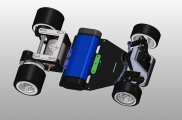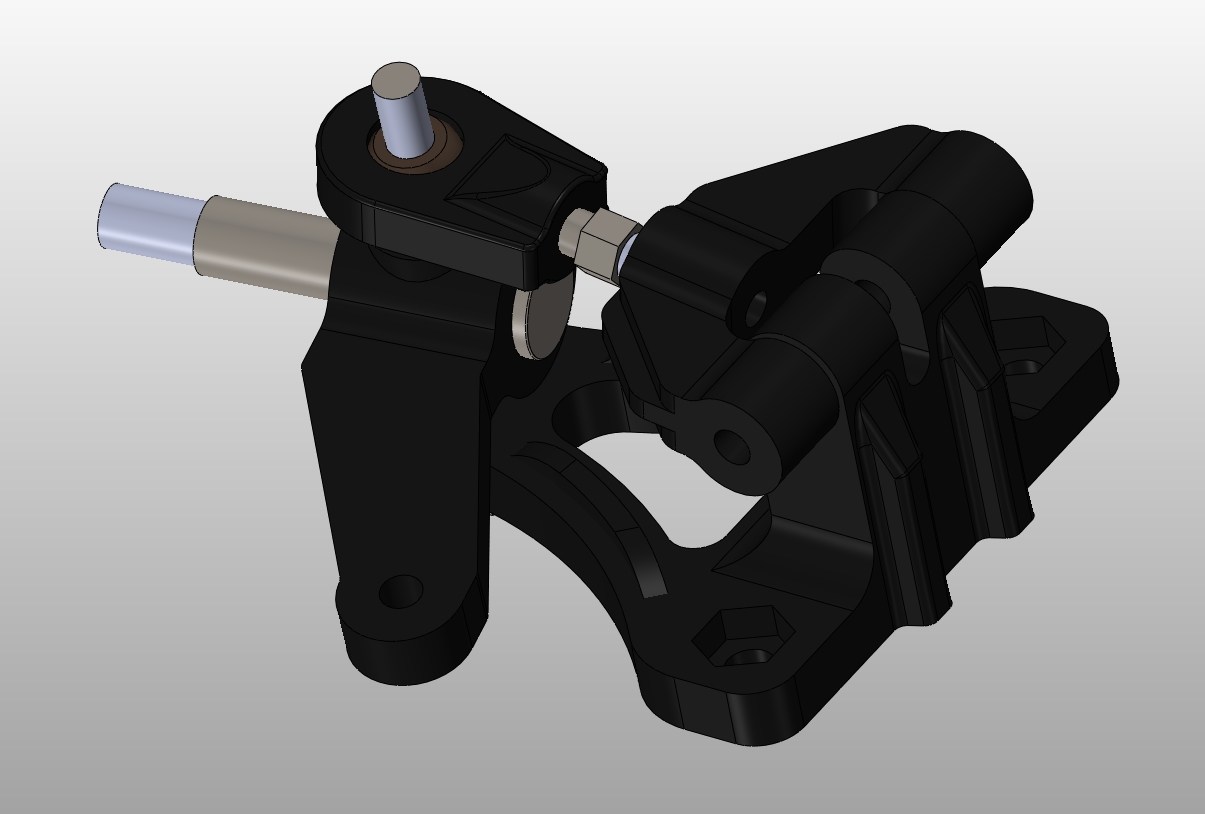异构电动汽车的协同控制研究(含Solidworks三维图)

异构电动汽车的协同控制研究(含Solidworks三维图)(任务书,开题报告,文献摘要,外文翻译,论文说明书30000字,Solidworks三维图)
摘要
本文以实现异构电动汽车之间的协同控制为目的,将模型预测控制作为理论基础,设计了建立在汽车运动学模型和动力学模型上的协同控制器。其控制的核心思想是轨迹跟踪,以领航车辆完成对参考轨迹的跟随行驶为前提,后续车辆再以相邻前车的行驶轨迹作为期望轨迹,完成轨迹跟踪。由于轨迹跟踪既要实现轨迹位置的跟随,对期望轨迹的通过时间也有要求,因此其应用于车车跟随控制上也能实现横向轨迹与纵向车距的兼顾控制。其中,运动学模型是以汽车的速度和前轮转角作为控制量,实现低速工况下的协同控制;动力学模型是以前轮转角为控制量,结合车距变化情况对车速实施bang-bang控制,实现高速工况下的协同控制。根据控制器在MATLAB中的仿真结果来看,两种模型的协同控制器的控制效果均较理想。
关键词:异构车辆;轨迹跟随;模型预测控制;动力学模型;协同控制
Abstract
This paper aims to achieve the cooperative control between heterogeneous electric vehicles. Based on the model predictive control, the model is based on the kinematics model and dynamic model of the vehicle with the collaborative controller. The core idea of the control is trajectory tracking. Under the premise that the leader vehicle completes the following trajectory of the desired trajectory, the subsequent vehicle uses the trajectory of the adjacent preceding vehicle as the desired trajectory to complete the trajectory tracking. Since the trajectory tracking not only needs to follow the position of the trajectory, but also has the requirement of the passage time of the desired trajectory, it can also be applied to the vehicle cart following control to realize both the lateral trajectory and the longitudinal vehicle distance control. Among them, the kinematics model uses the speed of the car and the front wheel angle as the control volume to achieve the coordinated control under low speed conditions; the dynamic model is the control value of the previous wheel angle, and the bang-bang control of the vehicle speed is implemented in combination with the change of vehicle distance. Realizes coordinated control under high speed conditions. According to the simulation results of the controller in MATLAB, the control effects of the two model collaborative controllers are ideal.
[资料来源:http://doc163.com]
Key Words:Heterogeneous vehicles; trajectory following; model predictive control; dynamic model; Collaborative control










[资料来源:https://www.doc163.com]
目录
第1章绪论 1
1.1课题背景及研究意义 1
1.1.1课题背景 1
1.1.2研究意义 2
1.2车辆协同控制的研究现状 3
1.3本文主要内容 7
1.4本文研究的主要技术路线 8
1.5本章小结 8
第2章模型预测控制 9
2.1模型预测控制的基本原理 9
2.2模型预测控制的数学形式 10
2.3模型预测控制的分类 12
2.3.1集中式模型预测控制 13
2.3.2分散式模型预测控制 14
2.3.3分布式模型预测控制 15
2.4本章小结 16
第3章基于运动学模型的异构车辆协同控制 17
3.1运动学模型适用工况及编队形式 17
3.2车辆运动学建模 18
3.3运动学线性时变预测模型 20
3.4基于运动学模型的协同控制器设计 21 [资料来源:http://Doc163.com]
3.4.1目标函数设计 21
3.4.2约束条件设计 24
3.5仿真验证与分析 26
3.5.1车辆参数与仿真工况设置 26
3.5.2仿真分析 27
3.6本章小结 33
第4章基于动力学模型的异构车辆协同控制 34
4.1动力学模型适用工况及编队形式 34
4.2车辆动力学建模 36
4.3动力学线性时变预测模型 41
4.4基于动力学模型的协同控制器设计 43
4.4.1目标函数设计 43
4.4.2约束条件设计 45
4.5仿真验证与分析 47
4.5.1车辆参数与仿真工况设置 47
4.5.2仿真分析 49
4.6本章小结 59
第5章结论与展望 61
5.1结论 61
5.2展望 62
参考文献 63
致谢 67
附录A MATLAB编程 68
下一篇:电动工程车整车控制系统设计(含CAD图,原理图,CATIA三维图)
